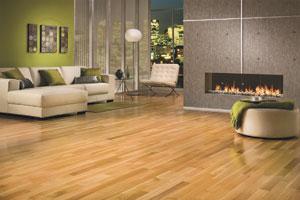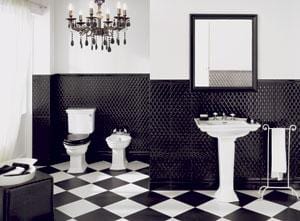
Credit: Westboro Flooring and Decor
There are tons of ways to go about sprucing up your home, but changing the flooring is one of the quickest and easiest ways to transform a space without doing a full-scale reno.
When considering a floor makeover, first look to spaces in the home that are heavily used — like the kitchen, entryways and bathroom. Tiles are the go-to choice for these heavy-traffic areas, but it’s important to remember that not all tiles are created equal.Nancy Primeau, a design consultant with Westboro Flooring and Décor, says that when buying tiles, it’s important to use North American manufacturers because of the standards that are enforced by the Porcelain Enamel Institute.
“All of the flooring tiles we have in our store exceed manufacturer expectations. They’re rated using what’s called a PEI scale, which measures hardness and durability,” Primeau says. “The higher the PEI rating, the more durable the tile.”
Ratings go from one to five, with three being the minimum acceptable rating for floors. Primeau recommends never going under a rating of three — even if you’re tiling countertops or accent walls. And if you’re tiling a heavy-traffic area, it’s best to choose tiles with a rating of four or five. In lower-traffic areas, hardwood floors offer a great upgrade, but be sure to do your research before purchasing materials.
“With hardwood, it’s like buying a car,” Primeau says. “They’ve all got a steering wheel and four tires, but the similarities end there.” Typically, hardwood runs anywhere from $4–12 per foot, with higher-quality brands and more durable, exotic woods running between $9–12 per foot. A good thing to check out before buying materials is where your wood of choice falls on the Janka hardness scale, which measures a wood’s resistance to wear and tear.
Matching your choice of wood with your lifestyle is important — for example, if you have pets or kids, your choice will be different than if you live alone.
“But even if it’s top of the line, hardwood is still wood,” Primeau says. “If you’re at the top of a ladder and you drop a hammer, it will dent your floor.”
For the highest-traffic areas, like the kitchen or the entryway, it’s wise to skip the hardwood altogether and go with a durable tile. Renters also have a number of options for floors. Area rugs are the most obvious go-to choice, but carpet tiles are another option. Both are available in a variety of sizes, styles and colours and can be taken with you when you move.
“You can alternate area rugs from one room to another and, depending on the decor and [the] season, adding an area rug and rearranging some furniture can change the entire look of a room,” Primeau says.
“Ceramic, stone and glass backsplashes are another option where, with minimal [investment], you can transform an area in your kitchen or bathroom into an interesting accent space.”
Many times, if you’re willing to pay for the material and leave it when you go, landlords are okay with these kinds of upgrades.

 Why you can trust Xtra
Why you can trust Xtra


